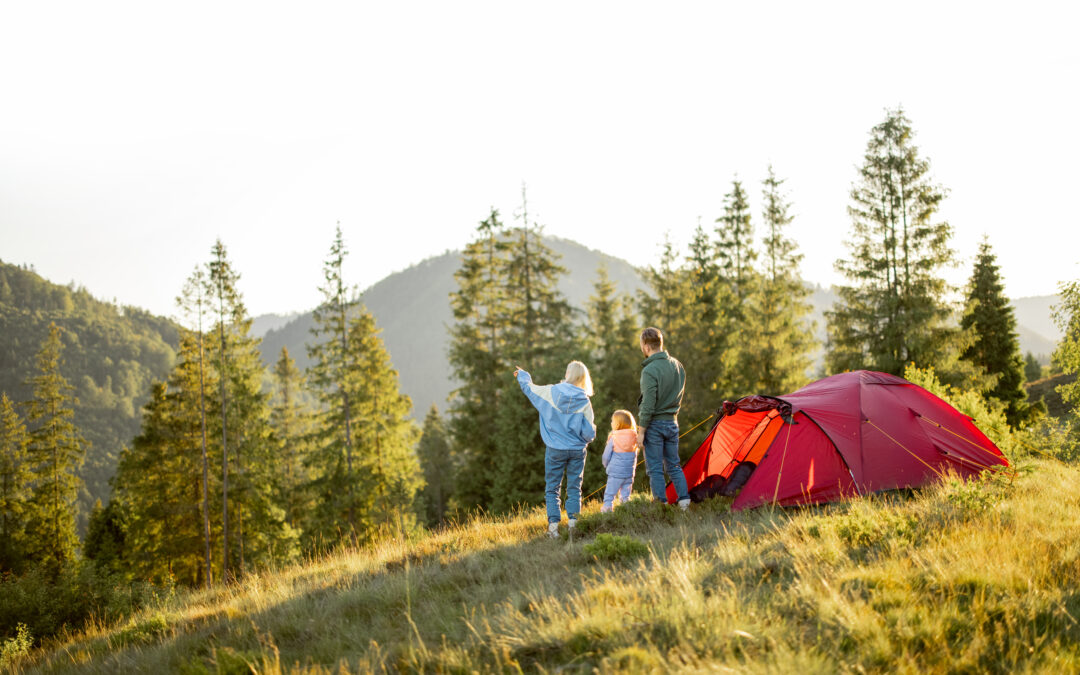
With more people working from home than ever before, the travelers among us are asking themselves why they’re sitting in their living room and not at a beachfront cafe in the Caribbean.
I didn’t have a remote job when I started traveling over five years ago. Every step of the way I had to figure out how to work from “home” with the added difficulty of “home” changing every few days or weeks. I’ve since set up my office on the beach in Sri Lanka, in a cabin among the Swiss Alps, overlooking the Zambezi River and in many destinations in between.
The appeal of “work from destination” is obvious. There may be a bit of a journey to get there and some hurdles involved, but with a little pre-planning, flexibility and a handful of precautionary steps, anyone can successfully work from whichever destination(s) tickle their travel fancy.
How to Choose a Destination
Choosing a destination to work from is a bit different than choosing a vacation destination. If it’s your first time working from abroad or you’re not completely comfortable with international travel, you’ll likely want to choose a destination a little closer to home—figuratively or literally. Places with strong expat communities are great to start because plenty of systems are already in place to support a remote work lifestyle.
For most people, you’ll first want to make sure your destination has very reliable wifi. This means sticking to close to major metropolitan areas or well-developed resort towns instead of more rural locations.
If you thrive in an office environment, consider cities that have co-working spaces. Co-working spaces typically offer day, week or month passes that grant you access to a communal office space with access to high-speed internet, meeting rooms, and plenty of coffee and other light refreshments.
Some of the most popular cities with digital nomads include:
- Medellin, Colombia
- Playa del Carmen, Mexico
- Berlin, Germany
- Chiang Mai, Thailand
- Canggu, Bali
Since travel restrictions have changed due to COVID-19, many countries have begun offering longer-stay digital nomad visas. A few of these countries include Barbados, Bermuda, Georgia and Mexico. Be sure to check on travel restrictions and requirements for each specific location before planning your stay.
Tips to help you succeed:
Have Back-Up Wifi
Before you leave, always make sure your accommodation has reliable internet. I won’t book an Airbnb without first speaking to the owner and explaining my work situation. I also ask them to send me an internet speed test to be sure their wifi will work for my needs.
No matter how good the internet is at your destination, set yourself up with a backup plan. SIM cards are typically inexpensive around the world. Buy a local SIM with data that allows you to use your phone as a hotspot in case of an emergency.
Set a Schedule
It’s much easier to slack off when you’re in a beautiful new place that’s calling for exploration. Furthermore, many remote work destinations will live at a much slower pace of life than a big city which can contribute to a decrease in productivity.
Consider taking a long weekend your first few days in a new place to get the lay of the land and satisfy your travel itch. If you’re freelancing or working for yourself, set a strict work schedule and stick to it. Without defined “office hours,” you’ll find yourself making exception after exception as fun opportunities inevitably present themselves. If you work for a company, check in with your supervisor to determine what hours you need to be “on the clock” and be sure to let your colleagues know when you’ll be online.
Protect Your Laptop
The importance of protecting your laptop is paramount when working from a destination, particularly in remote areas. What will you do if something goes wrong and you can’t quickly run your Macbook into an Apple store?
Start by investing in protective travel gear for your work-essential electronics. In addition, always carry your essentials with you while traveling and never put a laptop in a checked bag on a flight.
While working from the beach once in a while can be a treat, the salty ocean water, humidity and sand can quickly damage a laptop. In my personal experience, after working from a beach cafe in a particularly humid location, the moisture inside my brand new laptop caused my trackpad to stop working entirely.
It’s also important to protect yourself from theft. Laptops typically won’t fit in hotel safes, so consider bringing your own padlock to lock a closet door or zip and lock your suitcase when not in your room. Also, when leaving a cafe or co-working space where you had your laptop visible, be particularly vigilant.
Get Travel Insurance
Always be sure to have travel health insurance. The longer you’re gone, the more likely you’ll end up needing it in some capacity. Travel insurance that protects both your health and also your expensive belongings is your best investment.
Related Posts


How to Avoid “Traveler’s Tummy” and Protect Your Gut Health
Traveling sounds like the best way to spend your time off until you experience traveler’s tummy, turning your vacation into a spiral of digestive concerns. If you’ve been in and out of the bathroom after eating a local delicacy on the street, you’ve likely eaten...

5 Tips to Prepare for a Restorative Outdoor Escapade With Your Family
image source Sometimes, everyone from mom and dad to the littlest kids, needs a nice vacation from everyday life. Are you a family that feels like they need a break? Then it’s time to grab your loved ones and have a restorative...